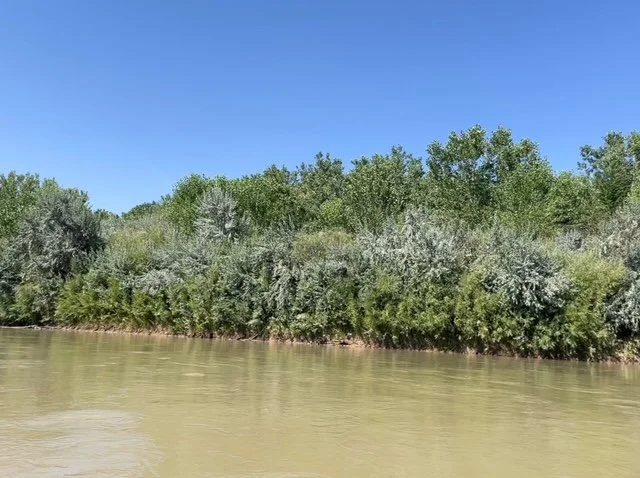TÓ
Photo credit: Meridith Benally, C4EG.
On August 9, 2025, the dedicated Board Members and Staff of C 4Ever Green were excited to set off on a meaningful rafting adventure down the beautiful San Juan River bordering the Utah Navajo Reservation! This journey not only honors the river's rich history of the Utah Navajos but also highlights the critical environmental issues we face, especially with invasive weeds like tamarisk. We warmly invite you to join us in celebrating our past while championing a healthier future for our cherished waterways.
We embrace our Diné philosophy that water is life. Our nonprofit organization promotes balance and harmony in all our endeavors. Across generations, we have upheld a deep connection to the San Juan River, viewing it not only as a source of life but also as a reflection of our identity and resilience in the face of environmental challenges.
The Diné families captured and removed from the San Juan River region during the documented traumatic "Long Walk" terminated the historical use of the river for traditional gardening and foraging methods. After the “Navajos” release from Fort Sumner in 1868, the Diné revived traditional gardening methods, only to be told the water was contaminated, and the use of the river was again ended. Indigenous communities suffered historical injustices. We strive to rectify them. We stand committed to:
Request for Public Hearings from the Utah Division of Water Resources
Request for translation into our Diné Language
Provide education on the Utah Water Adjudication to the community.
Photo credit: Ian Lameman.
The C 4Ever Green Board Members, staff, and guests recently gathered for a group photo before embarking on an exciting adventure along the San Juan River, which runs adjacent to the Utah Navajo Reservation. This picturesque setting not only serves as a backdrop for their activities but also highlights the connection between the organization's mission and the natural beauty of the region. The image, captured by Ian Lameman, a San Juan River Guide, showcases the unity and enthusiasm of the team as they prepare to engage with the river and the surrounding landscape. This trip emphasizes the importance of preserving and appreciating the environmental and cultural significance of areas like the Utah Navajo Reservation.
Photo credit: Meridith Benally, C4EG.
Ian Lameman, a guide on the San Juan River, shares valuable historical insights that highlight the deep connection between the Utah Navajos and the river. He emphasizes not only the practical aspects of their relationship, including reliance on the river for food, travel, and navigation, but also the profound spiritual ties they have to this important natural resource. This perspective helps to illuminate the significance of the river in our culture and way of life.
Photo credit: Meridith Benally, C4EG.
Raquel Thomas, a knowledgeable guide on the San Juan River, educates her group about the significant ecological impacts of two invasive species: tamarisk and Russian olive. These plants were brought to the area by colonial migrants with the intention of controlling the river's environment. However, their introduction has led to severe consequences for native ecosystems, suffocating the indigenous flora, which has detrimental effects on the native plants that thrived long before these invasive species arrived.
The degradation of these indigenous plants also means a loss of traditional plant knowledge for the Navajos, as well as the Navajo language, ceremonies, and educational practices tied to these natural resources. The endangered status of particular native species underscores the interconnectedness of ecology, culture, and language within the Navajo community, underscoring the importance of preserving both the environment and cultural heritage.

